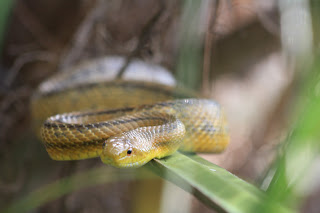
The white-eyed vireo (Vireo griseus) is a small songbird, and a key characteristic is their....you guessed it...white eyed! You can find these pretty birds in overgrown pastures, shrub areas, thickets, woodland margins, and mangroves. They forage some fruits but primarily on insects. They hunt the insects by taking short hops or flights and punctuated by short pauses where they tilt their heads and look around for prey. They bathe by rubbing against wet foliage.
The white-eyed vireo is often solitary or in pairs, and both sexes will sing their primary song in the winter time. They are monogamous and have solitary nests. The nests are open cups suspended from a fork of a small branch in a shrub or tree, typically lower down closer to the ground. Bark, leaves, roots, etc. are used to make the nest which is held together by insect silk and spider webbing. They even decorate the outside of the nests with things like lichen, moss, and leaves. Inside the nest, there is a lining of fine grass or hair. Both sexes incubate the brood which is usually 3-5 eggs. After 12-16 days the little tykes hatch and are fed by both parents. After 10-12 days they leave the nest. cowbirds will often parasitize their nests.






